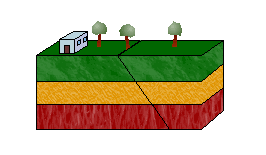Earthquakes
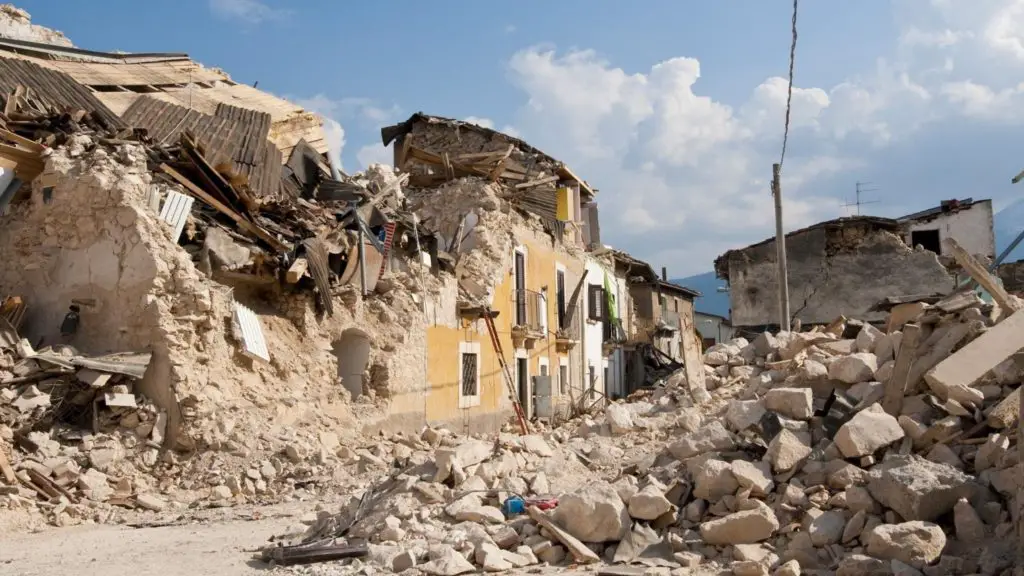
Earthquakes occur when one block of earth slips past another block along surfaces called faults or fault planes and generates ground shaking.
The area under the earth where the slippage originates is called the hypocenter or focus. The epicenter refers to the point on the Earth’s surface that is directly above the hypocenter.
Click below to go to the main reviewer:

Table of Contents
- Seismic Waves
- Seismology
- Faults
- Earthquake-related Hazards
- Download Article in PDF Format
- Test Yourself!
Seismic Waves
When slippage happens, the stored energy is released in the form of seismic waves. The seismic waves travel through the earth and cause it to shake. These waves can be classified into two types: body waves and surface waves.
1. Body Waves
Body waves are waves that travel through the interior of the Earth. There are two types of body waves: primary waves (P waves) and secondary waves or (S waves).
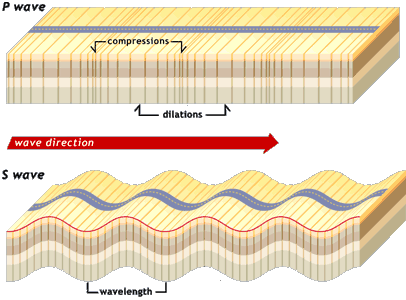
a. Primary Waves
These are the fastest seismic waves and can travel through solid, liquid, and gas. These waves push and pull the rocks in the direction the wave is traveling. They are also called compressional waves because of this behavior.
b. Secondary Waves
These waves cause the rocks to shake up and down at right angles with respect to the direction of the traveling wave. S waves are slower than P waves and can only travel through solids. Because of this, S waves cannot propagate through the liquid outer core. They are also called shear waves.
2. Surface waves
Surfaces waves, as the name implies, can only travel on the surface of the Earth. These are the waves that can cause tremendous damage. There are also two types:
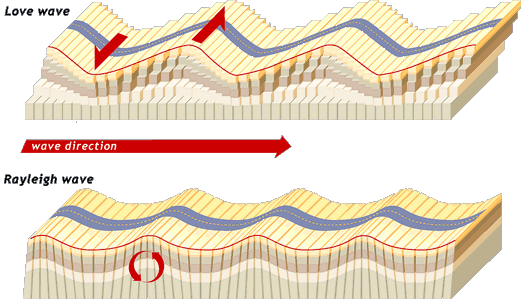
a. Love Waves
These waves are responsible for shaking the ground horizontally and vertically in an S-like pattern.
b. Rayleigh Waves
These waves move in a rolling motion similar to ocean waves.
Sometimes, before the main earthquake or mainshock, smaller and weaker quakes called foreshocks occur. The mainshock is the largest quake in the sequence.
Weaker and shorter quakes called aftershocks usually occur afterward. These quakes may or may not be felt, depending on the size of the mainshock, and can even occur over a period of days, weeks, or even months.
Thousands of earthquakes occur every day around the world, but most of these are too small to be felt by people or cause damage.
Seismology
Seismology is the study of earthquakes. Instruments that are very sensitive to ground shaking called seismographs or seismometers are used by seismologists to record earthquakes.
In order to describe and classify earthquakes, the intensity and magnitude are determined.
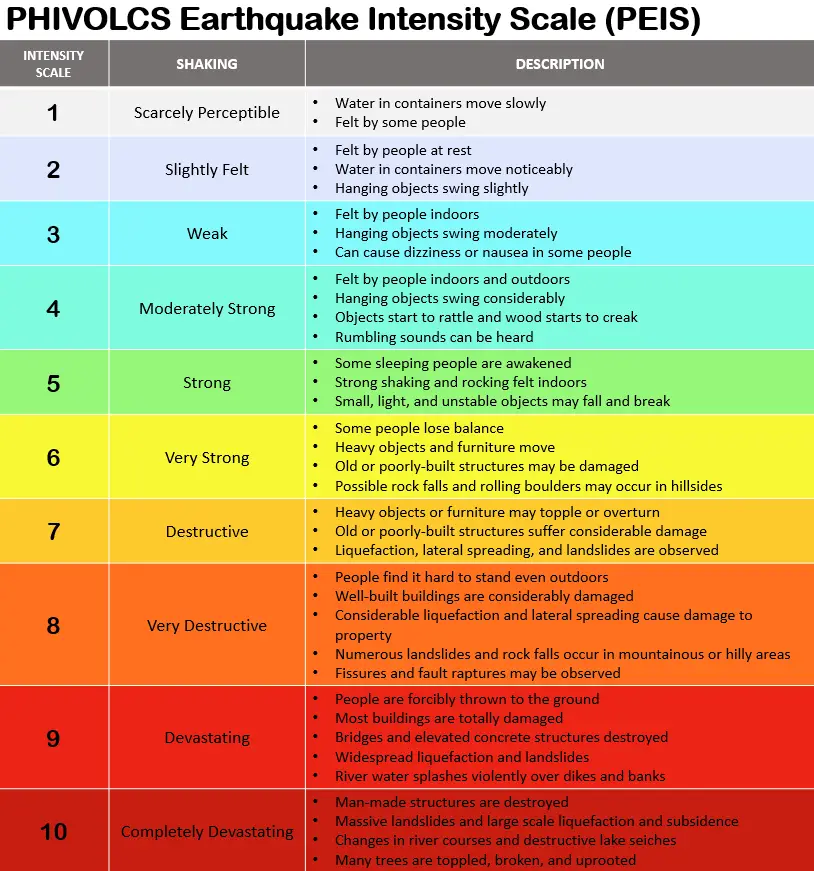
The intensity refers to the qualitative measurement of the amount of ground shaking at a certain location, depending on the amount of damage to property, life, and nature.
Different intensity scales are used in different countries. In countries like the United States, the Modified Mercalli Intensity Scale is used. In the Philippines, however, the PHIVOLCS Earthquake Intensity Scale (PEIS) is used. This scale was developed by the Philippine Institute of Volcanology and Seismology (PHIVOLCS) as a response to the devastating 1990 Luzon Earthquake.
The magnitude refers to the quantitative measurement of the amount of energy released at the earthquake’s source.
Before, the most commonly used scale for measuring the magnitude is called the Richter Scale, which measures the amplitude of the largest seismic wave on a seismogram. Now, seismologists use the Moment Magnitude (Mw) scale which measures the total amount of energy released by an earthquake. The Moment Magnitude scale proves to be more effective in measuring stronger earthquakes (Mw 5 and above) than the Richter scale.
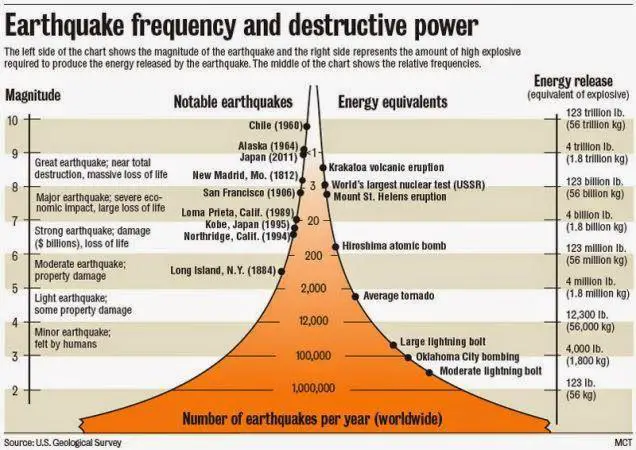
Faults
Where do earthquakes come from? Fortunately for some (and unfortunately for others), nearly 81% of earthquakes occur in a very tectonically-active region called the circum-Pacific Belt (popularly known as the Ring of Fire).
The next most tectonically-active seismic belt is the Alpine-Himalayan Belt where 17% of the world’s earthquakes occur. The rest of the earthquakes occur along the Mid-Atlantic Ridge in the Atlantic Ocean.
Earthquakes along the seismic belts originate from convergent plate boundaries. The contact between the two interacting plates is called megathrust faults which can produce earthquakes of Mw 9.0 and above.
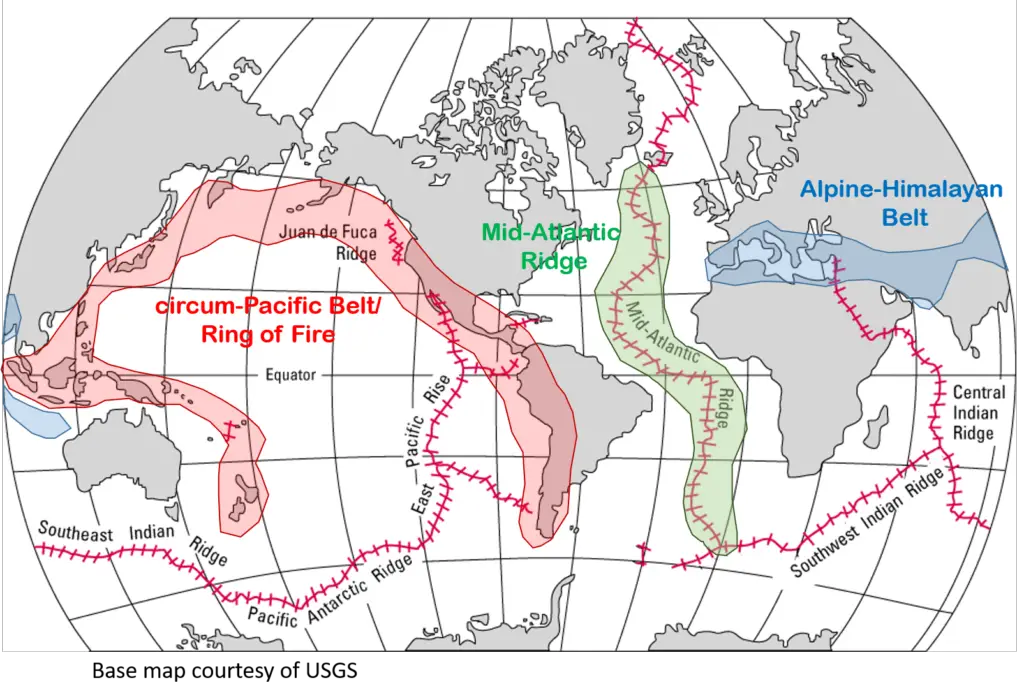
Natural or man-made events can cause earthquakes.
Earthquakes caused by the eruption of volcanoes are called volcanic earthquakes. Generally, small earthquakes called collapse earthquakes occur when underground caves or mines collapse. The detonation of explosives can also cause earthquakes called explosion earthquakes.
The most common type of earthquake, tectonic earthquakes, are caused by fault movement. There are main types of faults:
1. Normal Faults
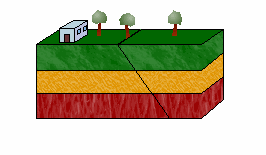
In a normal fault, the hanging wall moves down relative to the footwall.
Fun fact: Miners coined the term “hanging wall” to refer to the wall where they would hang their lamps and “footwall” for the surface on which they walk.
Normal faults are the result of tensional forces that pull the two slabs apart. They are also known as tensional faults, gravity faults, or normal-slip faults.
2. Reverse Faults
In a reverse fault, the hanging wall moves up relative to the footwall. This type of fault is the result of compressional forces that push the two slabs together, shoving the hanging wall above the underlying block. These faults are also known as thrust faults, compression faults, or reverse-slip faults.
3. Strike-Slip Faults
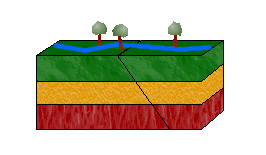
In a strike-slip fault, blocks move horizontally with respect to one another due to shearing forces.
Left-lateral strike-slip faults (or sinistral faults) occur when one block moves to the left relative to the other block. Right-lateral strike-slip faults (or dextral faults) occur when the block moves to the right.
An easy way of distinguishing between the two is imagining yourself standing on one block, facing the other block. If the block on the other side moves to the left, the movement is left-lateral. If it moves to the right, right-lateral.
Can you guess the movement of the strike-slip fault in the animation above? The answer: left-lateral.
4. Oblique-Slip Faults
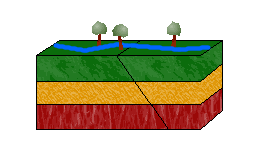
A combination of shearing forces and tensional or compressional forces would result in an oblique-slip fault, pictured above.
Earthquake-related Hazards
As we all know, major earthquakes can have devastating effects on both living and nonliving things. Depending on the destructive force of the earthquake, it can cause the following events:
1. Landslides and Ground Subsidence
These are caused by ground shaking during an earthquake.
A landslide is a form of mass wasting where large amounts of earth move down a slope under the influence of gravity. They can have devastating effects especially in heavily populated areas near hillsides or mountain slopes.
Subsidence is the sudden sinking of the Earth’s surface due to the movement of the earth underneath. Liquefaction is similar to subsidence but occurs when sediments are saturated with water. While these events can occur naturally, they are usually aggravated by earthquakes.
2. Flooding and Water-related Hazards
During and after an earthquake, large water pipes underground and dams may be damaged and fail. These can cause flooding in populated areas which may result in property damage and harm to life.
In enclosed bodies of water such as lakes or reservoirs, waves called seiches may occur. These are oscillating waves that produce major fluctuations in the water level, depending on the strength of the earthquake.
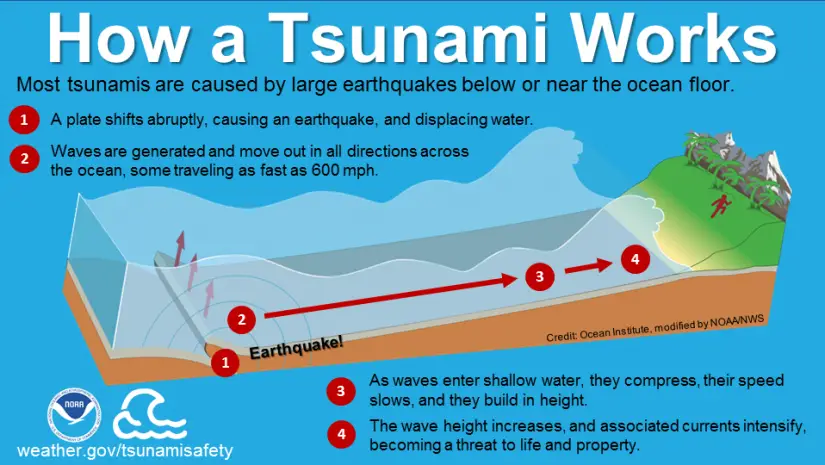
One of the most dangerous effects of earthquakes that originate offshore are tsunamis.
Tsunamis are giant waves that are produced when a fault displaces a large slab of the ocean floor They are nearly undetectable in the open ocean, but once tsunamis reach shallow waters, wave height increases dramatically and can reach up to 30 m, like what happened in the 2004 Indian Ocean Mw 9.1 Megathrust Earthquake in Sumatra, Indonesia.
Related: Midnight Shocker of ’76: Remembering The Deadliest Tsunami In Philippine History
3. Damage to Man-made Structures
Depending on the material used and the way they were constructed, structures such as buildings, bridges, roads, dams, and others are susceptible to damage.
Damage can range from cracks on the walls to the total destruction of property. Fires can also break out due to severed gas and electrical lines. Coupled with broken water pipelines, even small fires can quickly spread and cause massive damages.
Spillage of hazardous chemicals from factories and chemical containment facilities is also a possible threat, such as the leakage of radioactive water from the Fukushima nuclear power plant during the 2011 Japan Earthquake.
Next topic: Volcanoes
Previous topic: Plate Tectonics
Return to the main article: The Ultimate Earth Science Reviewer
Download Article in PDF Format
Test Yourself!
1. Practice Questions [PDF Download]
2. Answer Key [PDF Download]
Written by Ruth Raganit
Ruth Raganit
Ruth Raganit obtained her Bachelor of Science degree in Geology from the University of the Philippines – Diliman. Her love affair with Earth sciences began when she saw a pretty rock and wondered how it came to be. She also likes playing video games, doing digital art, and reading manga.
Copyright Notice
All materials contained on this site are protected by the Republic of the Philippines copyright law and may not be reproduced, distributed, transmitted, displayed, published, or broadcast without the prior written permission of filipiknow.net or in the case of third party materials, the owner of that content. You may not alter or remove any trademark, copyright, or other notice from copies of the content. Be warned that we have already reported and helped terminate several websites and YouTube channels for blatantly stealing our content. If you wish to use filipiknow.net content for commercial purposes, such as for content syndication, etc., please contact us at legal(at)filipiknow(dot)net
